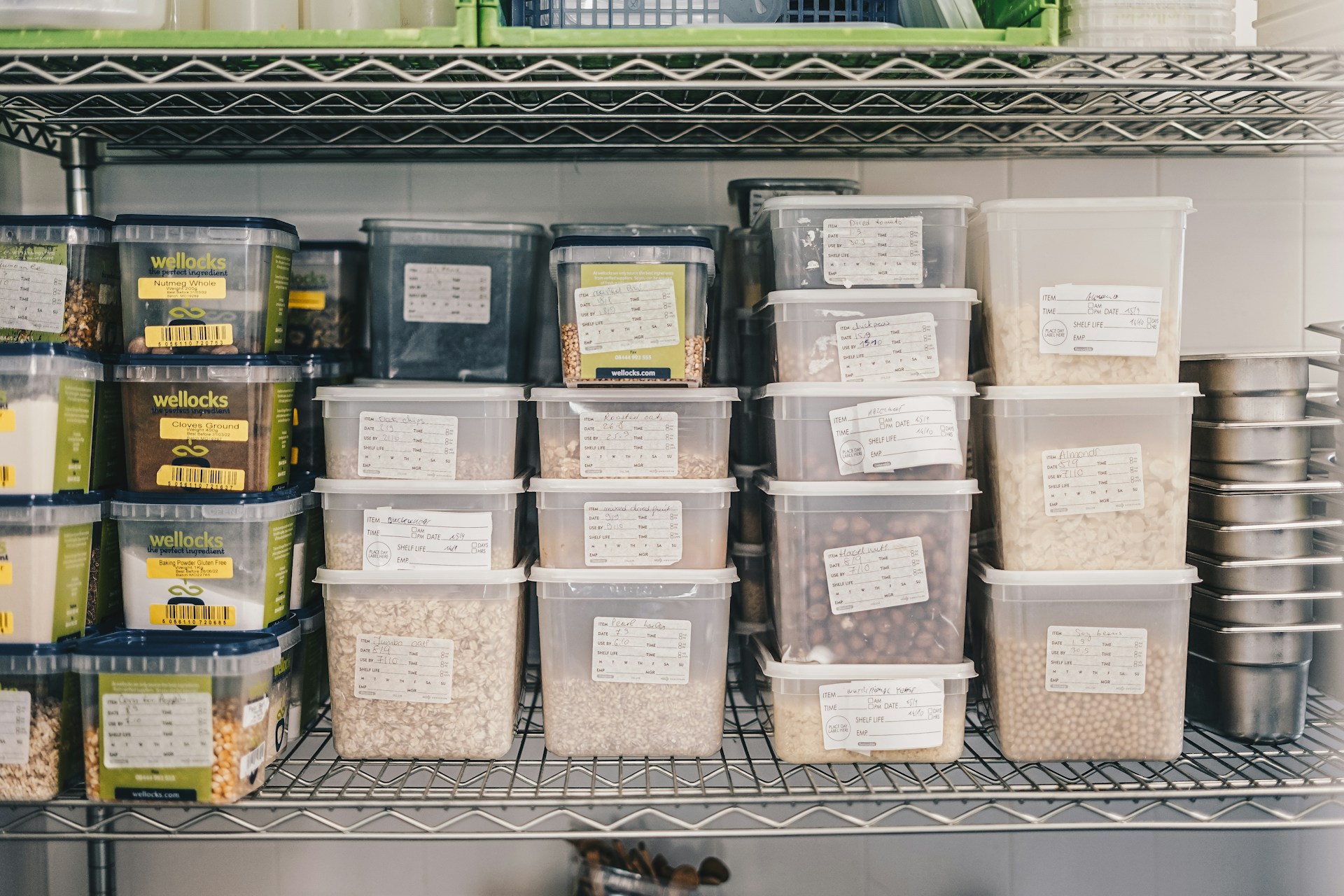Keeping food fresh is important for everyone, especially in grocery stores where quality matters most. Poor food storage can lead to spoilage, which not only wastes food but also affects its safety and flavor. Fresh, safe-to-eat foods satisfy customers and help businesses thrive.
Understanding the Basics of Food Storage
Food storage plays a vital role in keeping groceries fresh and safe for consumers. Ensuring proper storage conditions helps extend the shelf life of various products, maintaining their quality and taste. When food is stored correctly, it reduces the risk of spoilage, keeping customers happy and returning for more.
One major mistake is incorrect temperature settings. Foods like meat and dairy need to be kept at specific cold temperatures to slow bacteria growth. If refrigerators or freezers are too warm, it can lead to spoilage quickly. It’s crucial to check and adjust these settings regularly to prevent this.
Improper packaging is another common problem. Foods stored in damaged or open packaging can lose their freshness quickly. Ensure that packaging is sealed tightly to maintain quality. Also, poor hygiene practices, such as using unclean containers or surfaces, can introduce bacteria into fresh foods. Keeping storage areas clean is key to preventing contamination.
To tackle these issues, create a schedule for cleaning storage spaces and checking temperatures. Educate staff on the importance of properly sealing and labeling products. By understanding these storage basics, grocery stores can significantly improve food safety and freshness, leading to reduced waste and better customer satisfaction.
Essential Techniques for Maximizing Food Freshness
Maximizing the freshness of food requires using effective strategies. Different types of foods need specific methods to stay fresh longer. Here are some top strategies:
1. Perishable goods: Keep perishable items like milk, cheese, and eggs in the coldest part of the refrigerator. Ensure they aren’t exposed to temperature fluctuations, like those near the door.
2. Produce: Store fruits and vegetables separately since some fruits release ethylene gas that can spoil vegetables faster. Use crisper drawers to maintain the right humidity for leafy greens.
3. Dry goods: Store grains, flours, and cereals in airtight containers. This keeps them safe from pests and moisture, preserving their freshness.
Organizing storage areas efficiently also helps maintain food quality. Utilize clear bins and labels for easy identification. Practice the First In, First Out (FIFO) method, where older stock gets used before new. This reduces the chance of food expiring unnoticed.
Rotate products to ensure that older items remain at the front. Keep food off the floor, and use shelves to allow for proper air circulation around products. By following these techniques, grocery stores can enhance food freshness, reduce waste, and ensure customer satisfaction with every purchase.
Leveraging Technology for Smart Storage
Technology plays a transformative role in maintaining food freshness. Advanced automated systems provide precise control over storage environments, which is crucial for keeping food fresh and safe. These systems monitor and adjust conditions like temperature and humidity, ensuring optimal settings are maintained round-the-clock.
Automated systems reduce human error by constantly tracking these vital parameters. If a refrigerator’s temperature rises unexpectedly, the system alerts staff immediately. This quick notification helps prevent spoilage of perishable items. Many grocery stores use wireless sensors and real-time alerts to keep a constant eye on conditions, making it easier to act swiftly when something goes wrong.
Controlling humidity levels is equally important. Certain foods, like leafy greens, thrive in more humid environments, while too much moisture can cause spoilage in dry goods. Automated systems can be fine-tuned to provide the right environment for each type of food. Technology like fast food temperature automation systems simplifies this process, allowing grocery stores to maintain food safety and quality efficiently.
Creating Effective Food Storage Protocols
Developing clear storage protocols is essential for grocery stores aiming to keep food fresh. Begin by assessing the specific needs of your store’s inventory. Consider the types of products you sell and the appropriate storage conditions each requires.
Establish easy-to-follow guidelines for organizing products. Define roles for team members to ensure everyone knows their responsibilities, from checking temperatures to rotating stock. Use visual aids like charts or infographics to make protocol steps straightforward and easy to remember.
Training staff consistently is key to implementing these protocols effectively. Regular workshops and hands-on training sessions help reinforce the importance of adhering to storage guidelines. Encourage employees to take part in identifying any areas of improvement in the protocols to make them more efficient and practical.
Smart storage practices not only enhance food safety but also boost efficiency in operations. Consistently implementing these protocols ensures that customers receive the highest quality products each time they shop.
Conclusion
Incorporating smart storage solutions into daily operations transforms how grocery stores maintain food quality and safety. Using a blend of effective organizational techniques, advanced technology, and robust protocols ensures that stores provide fresh and safe products to their customers. These efforts not only prevent waste but also elevate the shopping experience, building trust and loyalty among consumers.
Staying ahead in the grocery business means constantly adapting and improving storage strategies. As technology continues to evolve, embracing these innovations will keep your store at the forefront of food safety and quality assurance. The journey towards better food storage is ongoing, with each advancement improving the way food is maintained and enjoyed by everyone.
To truly boost your food storage and maintain exceptional freshness, consider implementing cutting-edge monitoring solutions. Qualified Controls offers real-time automated systems to streamline your food safety efforts. With our technology, you can optimize your storage conditions effortlessly and confidently. Contact us today to learn how our temperature control for food safety systems can enhance your food safety and quality management.


